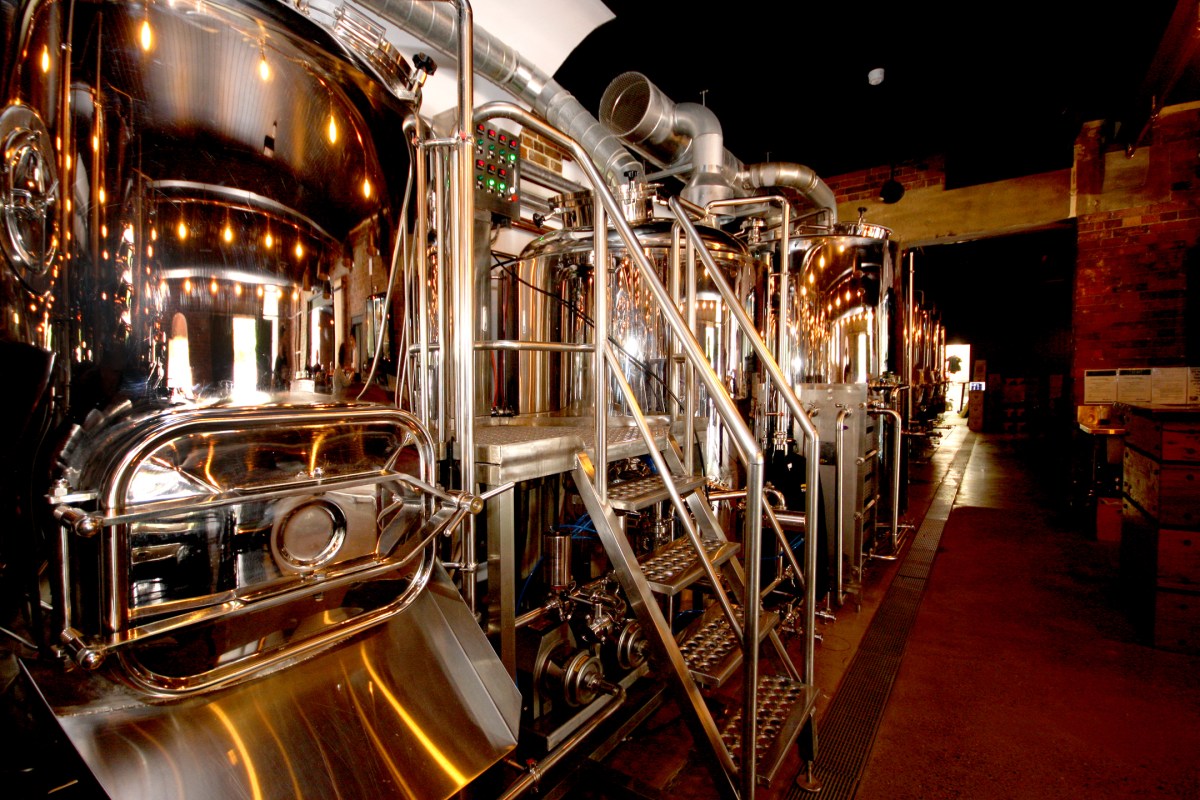In this third instalment of Brewpub Economics, it’s all about what equipment you need to have and what systems you need in place to succeed. Once again, we have Wade Curtis, founder of 4 Hearts Brewing and Pumpyard Bar and Brewery in Ipswich, Queensland, to talk us through it.
Equipment
You’re going to have to squeeze a lot of things into your space, so you really need to think about how you’re going to lay it all out. Here’s what you need to consider:
Milling: You’ve usually got to do this in a separate room because you’ve got a lot of dust and things flying around.
The brew-house: You’ve got boiling hot liquids going around. It is an industrial process and there are a lot of Workplace Health and Safety (WHS) issues that you need to manage.
Fermenters: These have to be hooked up to glycol and CO2, and you have to have flexible piping between everything as well.
Grain storage: Generally you’ve got to store a tonne of grain at any one time. Some breweries have that off-site, especially if you have a really small space, but it’s ideal to have it on-site.
Keg storage: If you’re not storing your beer in bright tanks, you need to store it in bigger cool rooms as well.
Other equipment: Keg washers and hoses. Lab equipment, especially if you’re going to package your beer.
The equipment side of things is quite complicated and there’s a whole different range of ways you can source that. We bought all of our gear direct from China and we spent a lot of time researching it.
Operations
You’ve got to decide whether you can brew when the pub is open – it depends on your set-up. Cleaning equipment is hot, it’s acidic and caustic. You’ll see in a lot of brewpub designs that a piece of glass separates the brewhouse and the bar. We didn’t do that – that’s why we have to actually close and not allow patrons into the bar for cleaning. But we think the visual makes up for that. In the market we’re in, Mondays and Tuesdays are not that busy anyway, so we’re probably saving ourselves money by not having staff in on those days except for the brewers.
For a brew day, you have to factor in that that’s going to be between 6-10 hours depending on what you’re doing. A double batch would probably take a good 10-12 hours by the time you clean up. Pretty much every time you put something into a tank, you will have had to have cleaned three tanks to get it into that tank, so cleaning is a huge part of the process. You’ve got to take something out of a tank, clean it, clean the vessel it’s going into and clean kegs as well.
You’re looking at the equivalent of one and a half full time employees to run a brewery. You need a head brewer and you need an assistant. If you package you need more people, but if you’re purely a 1200L brewery that’s selling your beer primarily on site and brewing two days a week, those two positions are enough as it’s not overly labour-intensive. What’s interesting is that it takes the same amount of FTE to brew 100L, 1200L or 2400L, so it’s a really scalable production. We brew 10,000L per month with those two employees.
Check in tomorrow for more info on compliance and costings. Or if you want to start at the beginning, you can read the first and second instalments here.

